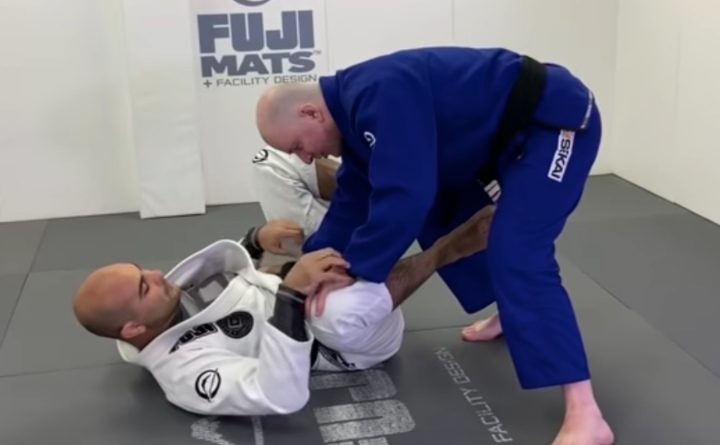John Danaher Explains Why Leglockers Can’t Neglect Guard Passing
John Danaher, and I’m sure many others, have noticed a fundamental area of BJJ is being neglected by an increasing number of fans of the modern leglock revolution, guard passing. A lot of this is down to the thought process that being good at the leglock meta replaces the need to pass guard and this is exactly why coaches like Jean Jacques Machado think the leglocks should be reserved for blue belts. While John Danaher doesn’t seem to take as extreme measures as others, he still took the time to explain exactly why you can’t afford to overlook guard passing, no matter how good you are at leglocks:
“Do leg lockers need to be able to pass an opponents guard? I question i am often asked is whether athletes who specialize in leg locks even need to bother with guard passing – after all, can’t they just directly attack the legs and forego the whole notion of getting an opponents guard? Certainly if you were very good at leg locking you could employ this strategy, but it would soon run into problems. The problem with this line of thinking is fourfold.
First, it makes you very predictable – that’s never a good thing in combat sports, as opponents will soon figure out what your game is and adjust themselves accordingly. Very soon it will be exceedingly difficult to get the breakthrough with leg locks alone. Secondly, it largely removes what is perhaps the single biggest determinant of success or failure in grappling in general and leg locks in particular- physical and tactical PRESSURE OVER TIME that melts opponents so that they are far easier to defeat in the tenth minute than they were in the first minute and which creates distraction so that as an opponents defends guard passing he is easier to leg lock and as he defends leg locks he is easier to pass.
Third, the whole idea of the leg lock revolution that my students started was to attack 100% of the human body, rather than just the traditional upper 50% of the body. When you refuse to pass guard, you simply make the same mistake in reverse – now you can only attack the lower 50% of the human body and the entire arsenal of upper body submissions is denied to you. It would be a sad thing to launch a revolution against attacking half the human body and end up doing the same thing only substituting lower body for upper body. Fourth, the most effective submission holds of them all – strangles – require you to get to the upper body. No guard passing ability means no strangles from top position.
As much as I love leg locks, there are always going to be some opponents who simply refuse to tap to them and will fight in with badly damaged legs. You need to be able to pull out the heavy artillery and strangle them unconscious – so you need to be able to get past the legs to the upper body – even if you love leg locks!”
John Danaher on Guard Passing for Leglockers

